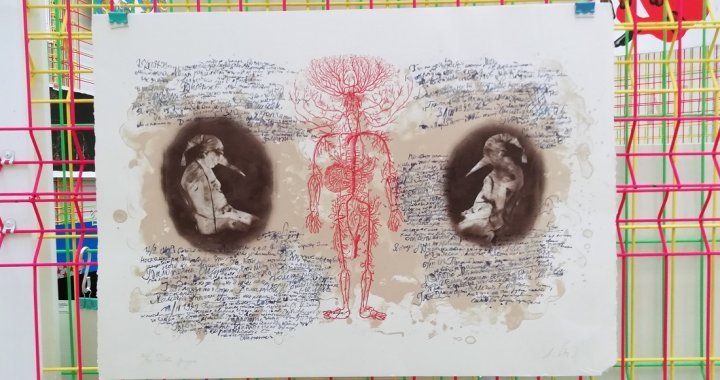
An Art Fair Like a Festival
Cosmoscow International Fair of Contemporary Art
Moscow, Gostiny Dvor
6–8 September 2019
12/09/2019
Last week saw the Cosmoscow international art fair, founded in 2010 by the collector and art patron Margarita Pushkina, take place in Moscow for the seventh time, bringing together almost seventy art galleries and more than three hundred artists from fourteen countries. With each edition, it is following its much-desired goal with increasing determination, striving to unite Russian and international collectors, gallerists and artists within the framework of a civilised art market.
Step by step, the fair seems to acquire more and more features of a huge professional event with its own slot ‒ September ‒ in the international art calendar, its dedicated team, patrons, consulting panels of collectors and experts. The Cosmoscow Foundation for Contemporary Art has been active for two years. engaging in an extensive programme of activities. Last but not least, this year, thanks to Olga Temnikova, member of the consulting panel of experts of Cosmoscow and co-owner of the Temnikova & Kasela Gallery, the fair found a new art director.
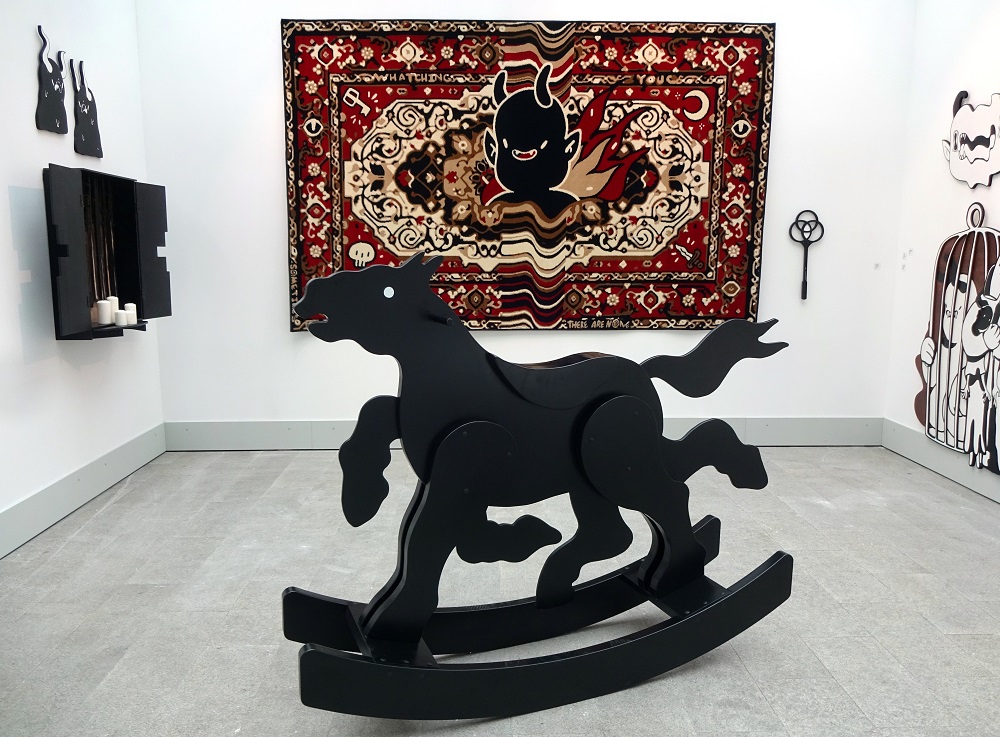
Maxim Trulov and Ksyusha Lastochka. YOUR MUM`S KNIGHT. FUTURO Gallery (Nizhny Novgorod)
Professional art historian and philosopher Simon Rees recently headed the Govett Brewster Art Gallery, New Zealand’s museum of contemporary art; previously he was well known for his work at the MAK ‒ Museum of Applied Arts in Vienna, and before that ‒ at the Vilnius Contemporary Art Centre (CAC); in 2007 he was the curator of the Lithuanian pavilion at the Venice Biennale. Rees also worked on the inaugural exhibition for the Tallinn ‒ European Capital of Culture 2011 programme at the Art Museum of Estonia (KUMU). Since his East by South West: curated by Vienna 2011 exhibition, Rees has been focusing on re-examination of the notion of Europe in the post-Soviet era. He has long been a frequent visitor to Moscow ‒ both as a member of the Innovation Prize panel of experts and contributor to numerous interdisciplinary projects.

Ekaterina Panikanova. Walking in his garden. z2o Sara Zanin Gallery (Rome)
Asked by Arterritory about working with the new colleague, Margarita Pushkina answered:
‘It’s wonderful. It is important for art not to be confined within national borders, not to stew endlessly in its own juice, and our fair from the very beginning set out to operate in the international context. It is not at all a simple task, considering the multitude of external factors, like volatility of the global situation, complexities of the Russian customs legislation or, ultimately, lack of trust by experienced players. And from the very first moments of working with Simon ‒ and it has not been long; he only got involved in preparing this edition half a year ago or so ‒ we felt some inspiring change taking place. His taste, experience, professional contacts helped us attract the attention of new participants.’
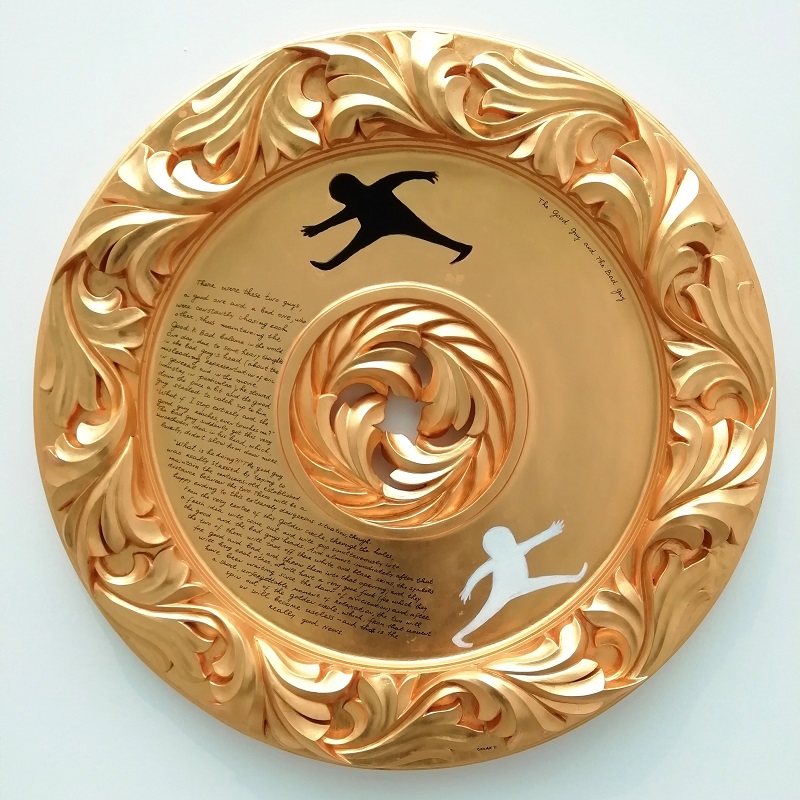
Nedko Solakov. The Georg Kargl Fine Arts booth (Vienna)
Indeed, Cosmoscow 2019 boasted a record number of foreign galleries represented at the fair. Thanks to the efforts of the new art director, there were fifteen of them this year. And with the arrival of these international galleries, some global stars also came to the fair. The Giorgio Persano Gallery from Turin brought three half-million-dollar mirror paintings by Michelangelo Pistoletto with images applied in his original technique: anybody could if not buy then at least catch his or her reflection in a museum masterpiece by one of the seminal artists of the arte povera movement. Gallerie Forsblom with branches in Helsinki and Stockholm showed and offered for sale some new yet easily recognisable pieces by Stephan Balkenhol, brilliantly combining crude woodcarving with gold leaf and paint. Nedko Solakov – the most successful Bulgarian in contemporary art ‒ was larking around in the booth of the Viennese Georg Kargl Fine Arts. There is not any less irony, wit and existential solemnity in Solakov’s recent works than in his famous conceptual projects of the noughties. The Parisian Galerie Frank Elbaz brought to Moscow a large selection of works by the guru of Moscow conceptualists Dmitri Prigov. His unique graphic works cost from fifteen thousand euros upwards, but the price of his Tree of Rejected Poems exceed forty. New Italian galleries were also focusing on Russian artists. The booth of the z2o Sara Zanin Gallery from Rome presented a solo show by Ekaterina Panikanova – mournful graphic art and objects on old book pages. C+N Canepaneri from Milan had chosen for its booth a neon text by Arseny Zhyliaev, a meaningful quote from a hit by Soundgarden, written in English in Cyrillic-inspired lettering.
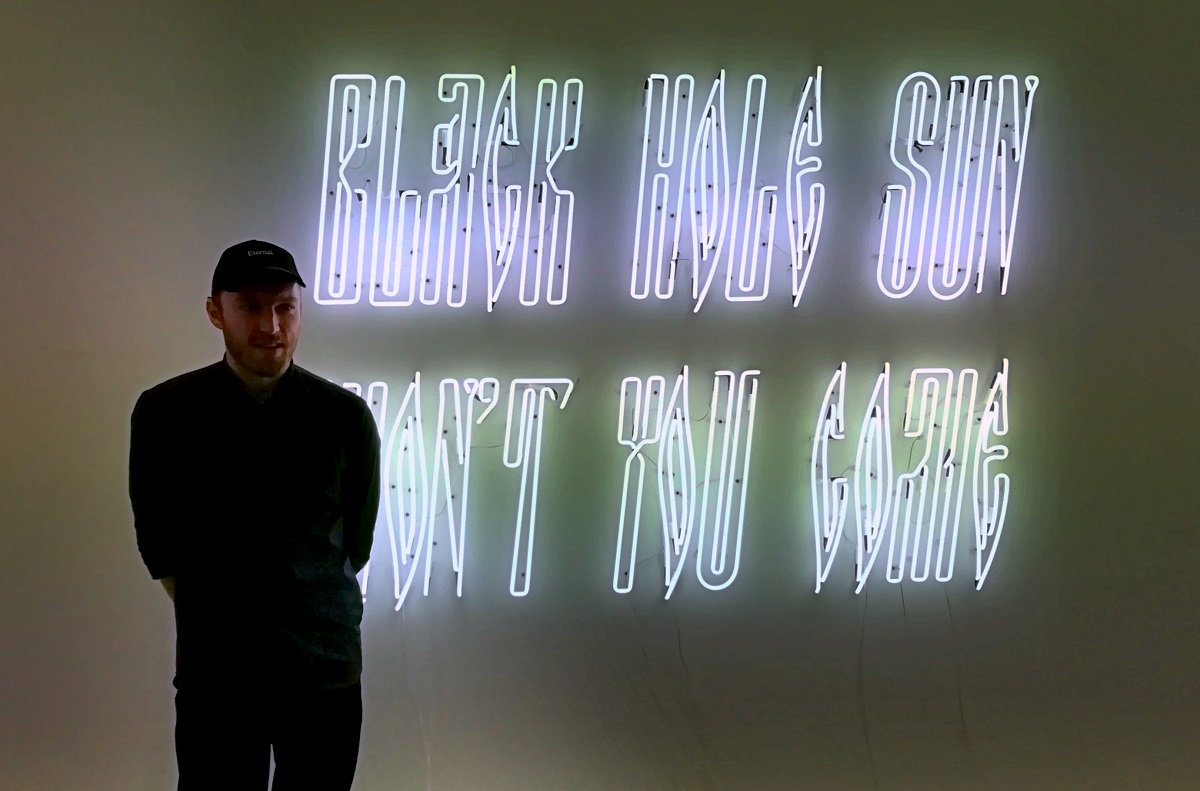
Arseny Zhilyaev next to his work. The C + N Canepaneri Gallery stand (Milan – Genoa)
In association with the embassy of Qatar in Russia, the general partner of the art fair Qatar Airways presented the White Sun exhibition (curator Anastasia Shavlokhova) dealing with the problems of national identity in these volatile times. Danila Tkachenko, Soundwalk Collective and others were reflecting on the significance of being one with nature, paying attention to ‘the other’ and studying foreign cultural codes. The project of the independent LOCUS gallery from Oslo unexpectedly provided a parallel to this stirring exhibition. Thale Fastvold and Tanja Thorjussen with their fellow female artists examined art as a sanctuary and a catalyst in times of ecological and historical change. How does art evoke compassion and inspire to bring about some change? The artists search for answers to these questions in performance, prints, objects and video.
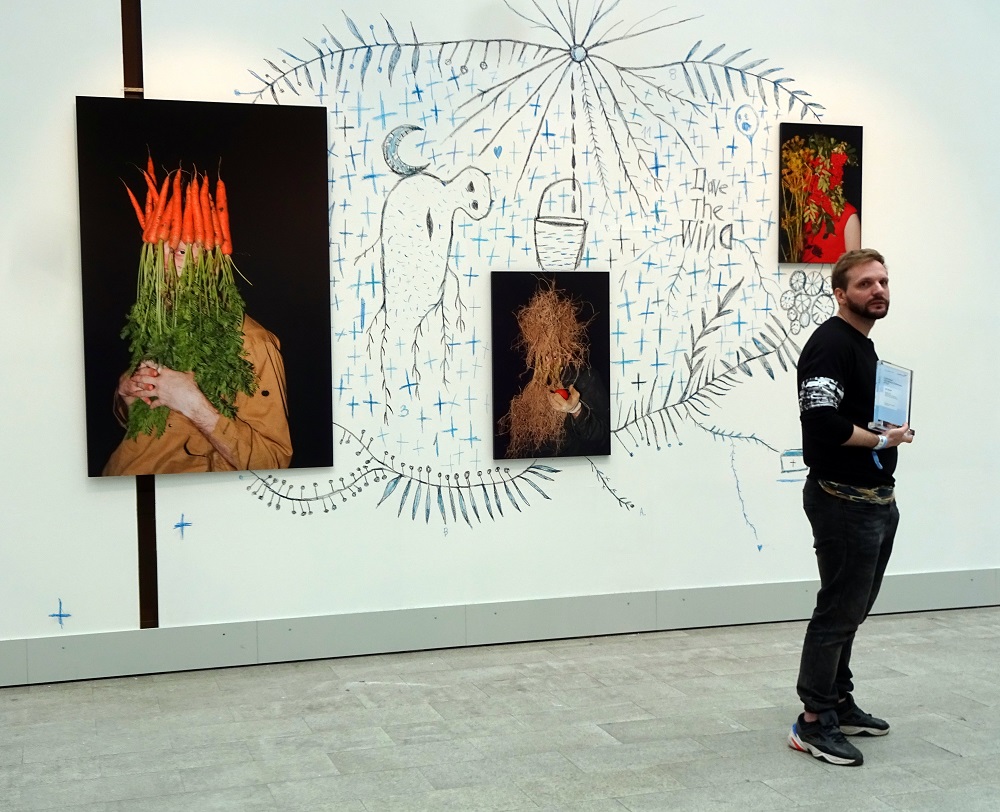
Igor Samolet at his Herbarium project
Cosmoscow is size-wise significantly more modest than the major art fairs, and yet that has not deterred it from developing its structure and making it more complex, following the example of some of these giants. Participating galleries were divided among six sections; the special projects surprised with their diversity; the winners in a number of categories were awarded generous prizes. At the press conference dedicated to the opening of the art fair, director of the collection owned by the Swiss financial corporation Credit Suisse André Rogger announced the winner of the fourth annual award for young artists. This year’s winner was Igor Samolet with his multilayered project Herbarium that combines phantasmagorical self-portraits, drawings and old photographs. The prize is a grant of 3000 Swiss francs and an opportunity to take part in the Bern PROGR cultural centre residency. Thanks to the financial support from the Moscow office of the Swiss Pro Helvetia cultural foundation, the length of this year’s residency has grown from one month to three.
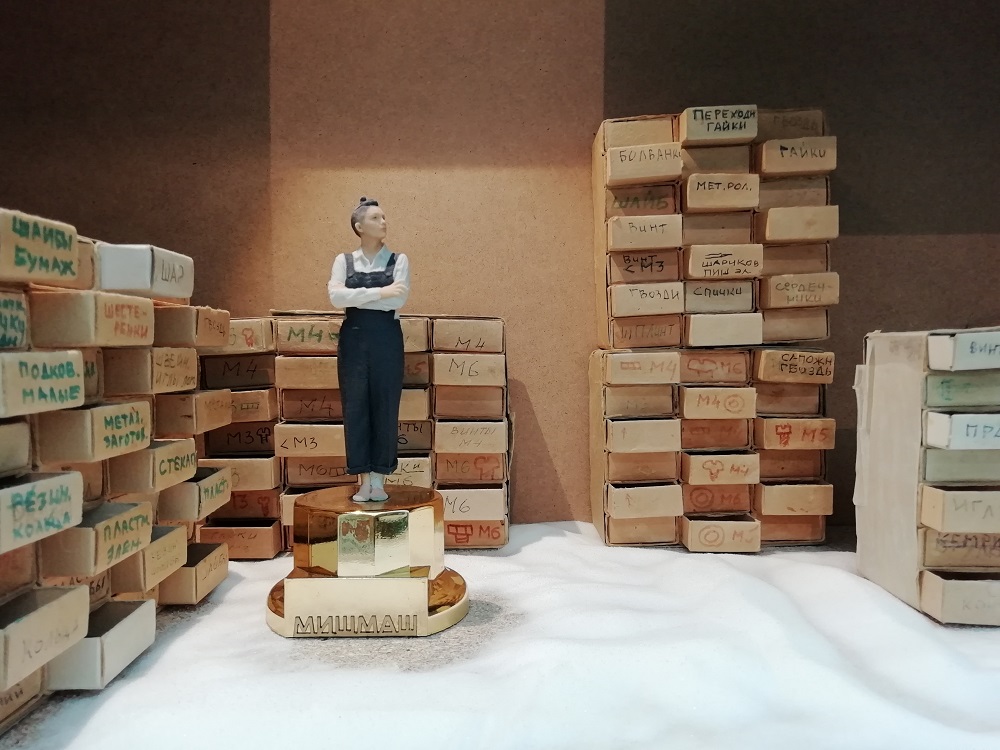
Fragment of the duet MishMash exposition
The Moscow art duo MishMash were the winners in the Best Artist category. The micro- or even nano-retrospective by Mikhail (Misha) Leykin and Maria (Masha) Sumnina was housed in various alcoves, panel boxes, nooks and crannies all over the premises of the art fair. An actual quest comprised of fourteen episodes, this show demanded the utmost concentration and attention.
According to Cosmoscow, this year’s Best Institution, the Zarya Centre for Contemporary Art from Vladivostok, serves as a genuine cultural educator, representing the most current contemporary art in the Far East of Russia and helping young artists find their place in the contemporary art world. The principal curator of the centre Alisa Bagdonaite and her team have organised numerous projects and publications featuring local artists, whose works are now represented in some of the largest museum collections.
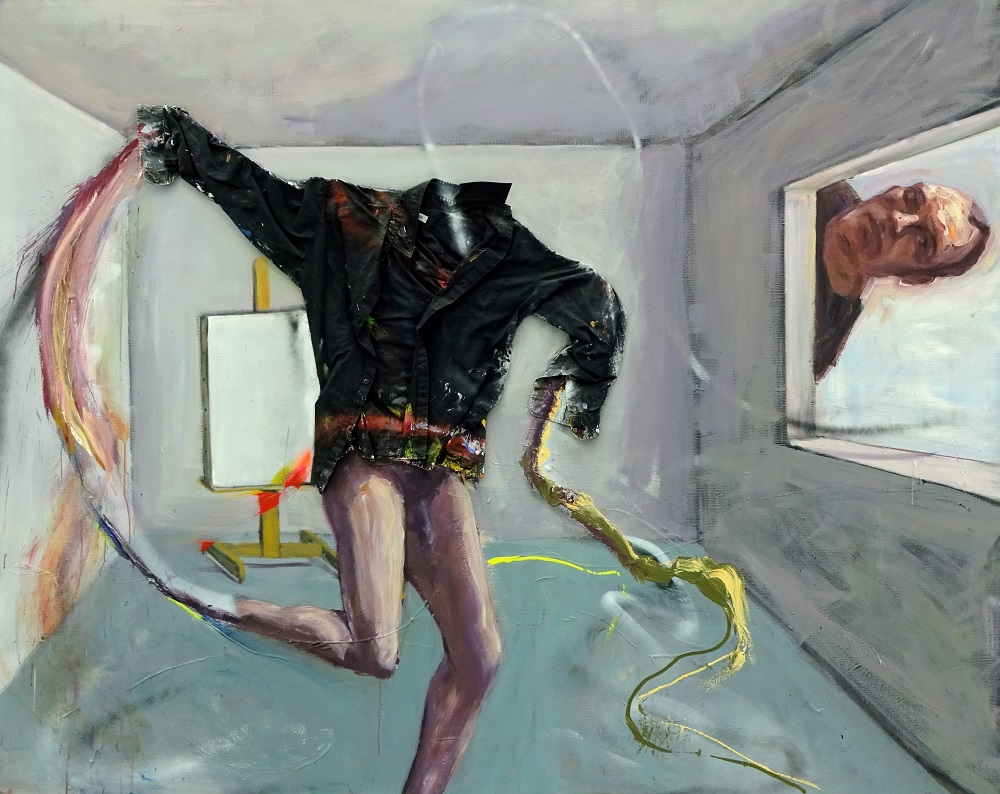
Jaan Toomik. The Temnikova & Kasela Gallery stand (Tallinn)
Best Museum of the year, the Moscow Museum of Modern Art, about to turn twenty, also considers educating its most important mission. In this status, MMOMA was responsible for the education programme of the art fair, also presenting something like a preview of the anniversary exhibition in its pavilion. In her symbolic installation entitled Everything Is Going to Be Alright, Olga Treyvas (FORM architectural studio), one of the guest curators of the upcoming exhibition, used a complex curve of the wall to bring together the first and most recently obtained pieces of the MMOMA collection ‒ an abstract painting by Georgy Stenberg and Uta Bekaia’s Blind King. The publisher Irina Prokhorova bought the psychedelic video by Bekaia at a charity auction for the benefit of the Cosmoscow Foundation for Contemporary Art and donated it to the museum.
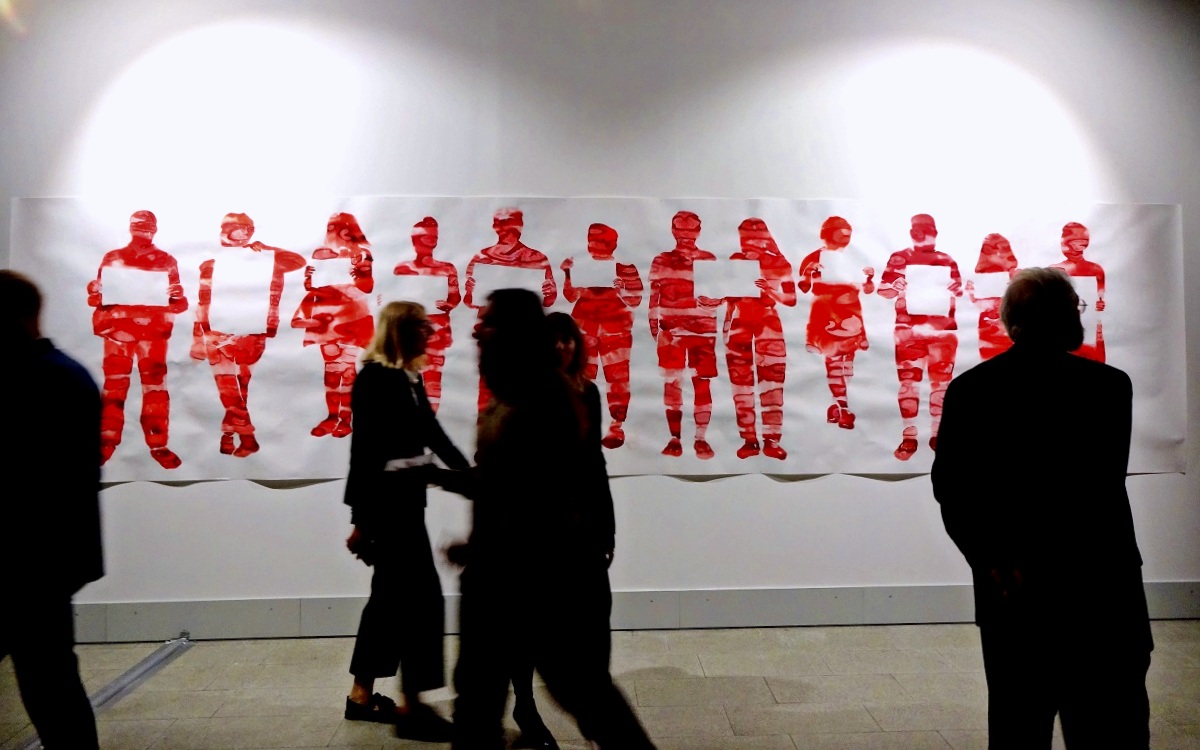
Ekaterina Muromtseva. Picket. XL Gallery (Moscow)
The question of whether everything is really ‘going to be alright’ in our long-suffering country is not an idle one, and the organisers of the art fair are well aware of that. It is not a coincidence that the viewer, entering the fair, was immediately greeted by the blood-red Picket by Ekaterina Muromtseva, presented by the XL Gallery. Cosmoscow has always readily responded to things taking place outside its walls. Who does not remember the #НАШДРУГКИРИЛЛ (#OURFRIENDKIRILL) graffiti on the walls of the art fair? However, solidarity with the persecuted does not preclude efforts to work on a professional level. Perhaps it is the hypertrophic perfectionism that could be defined as Cosmoscow’s contribution to the common cause. Clever, ironic or lyrical contemporary art and acclaimed examples thereof can serve as an excellent preventive measure against cemetery flowers, pseudo-ornaments and loose tiles on the streets of the Russian capital. Brushing aside reproaches for blissful naivety, let us remember that dripping water hollows out stone and that history abounds in examples of direct interaction with the world of a new lifestyle or new art transforming the historical atmosphere.

Vasily Elephants. Cactus. Gallery 11.12 (Moscow)
The programmatically clear and elegant space of the art fair was the objective and achievement of the team behind it, Arterritory was told by the experienced gallerist Elena Selina, one half of the Cosmoscow duo of experts: ‘Our art fair is curated, and we care about the quality of presentations by the participating galleries. You can now show three artists in your booth, and it is imperative to think about the ways in which they will be interacting and influencing each other. Personally, I was taught a good lesson by a presentation at the Armory Show a long time ago, when I brought loads of all sorts of things to the fair and spilt it all out in front of the public with a Russian merchant-style gesture. It was then that I realised the importance of limiting yourself and making the right choices. The importance of organizing the interaction of works within the space. And that by doing it you are thinking of the artist and the viewer alike. At the end of the day, it also has an impact on sales. And I would like our art fair to always remember that.’
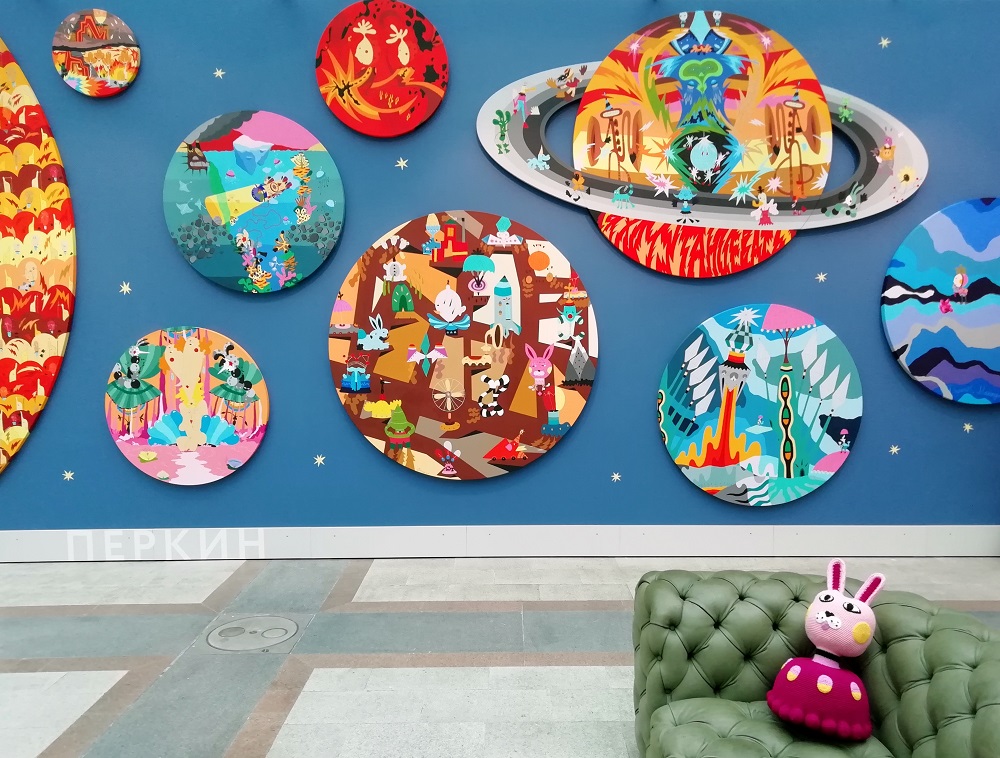
Vova Perkin. ART4 stand (Moscow)
It is exactly what the booth of the Moscow Artwin Gallery, named the Best Booth of the year by Cosmoscow and invited to take part in the next edition free of charge, is all about. The black-and-white aggressive expressionist/Dada paintings by Alisa Yoffe co-exist wonderfully with the modestly sized drawings by Evgeny Granilshchikov and his psychedelic video, for the first time revealing the musical potential of the artist. He wrote, played and sang a song entitled The Caravan Is Coming; a copy of the video he made for his song is sold for EUR 4000.
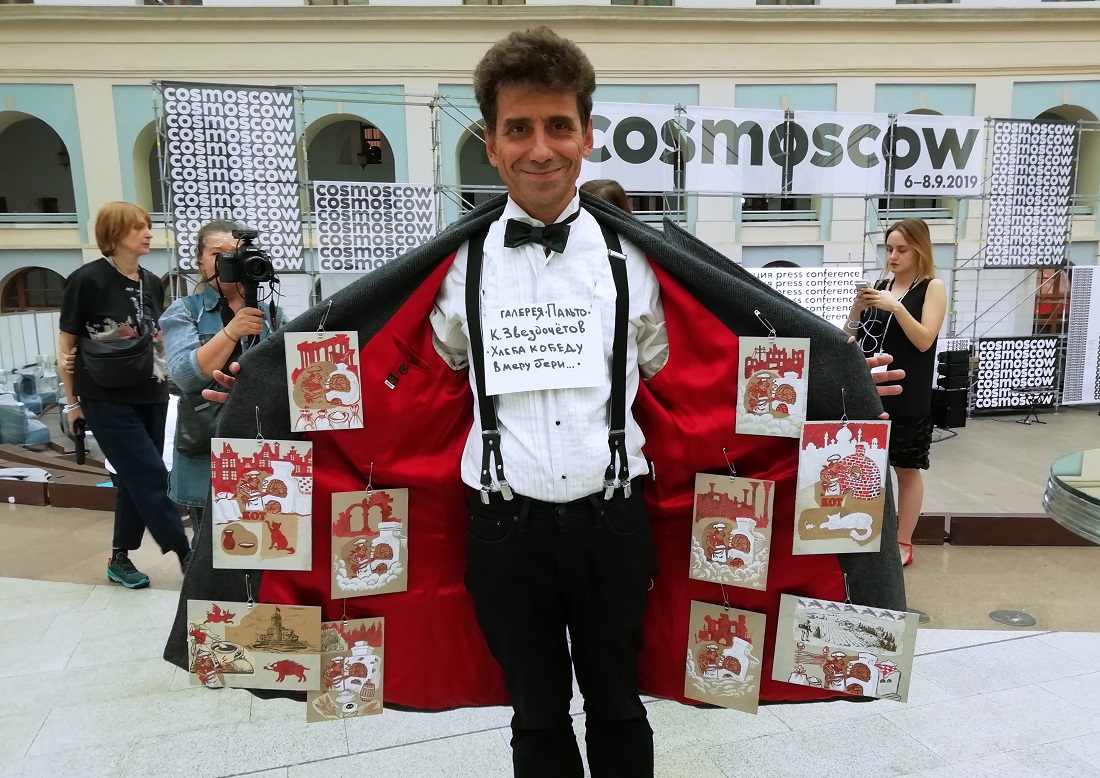
Alexander Petrelli. Gallery Coat (Moscow)
First and foremost, an art fair is about money; Cosmoscow pays a lot of attention to numbers and is very good at sums. (The previous edition brought the galleries approximately a hundred million roubles and nineteen thousand visitors.) However, another very important aspect, alongside education, is the opportunity to communicate, make new acquaintances and new contacts. The fleeting moments of the show produce significant delayed effects. And money, of course ‒ red dots started to appear next to works even before the official opening, not least because the spectrum of styles and genres was extensive and the pricing policy at the art fair was democratic.
The offering of galleries represented at the Design section ranged from classic modernist furniture to collectible contemporary Chinese designers, to paintings by Yuri Kuper. The Edition section featured editioned prints or limited-edition objects. And the range was endless here, the second edition of NATI ‒ New Archive of Limited Edition Art ‒ by Shaltai Editions in association with the Tretyakov Gallery and the Russian Silkscreen Foundation global project, a global project by the JART Gallery, were rubbing shoulders with amusing sweaters by Alina Glazoun and bricks by Andrey Syaylev at the ArtTube Editions booth.
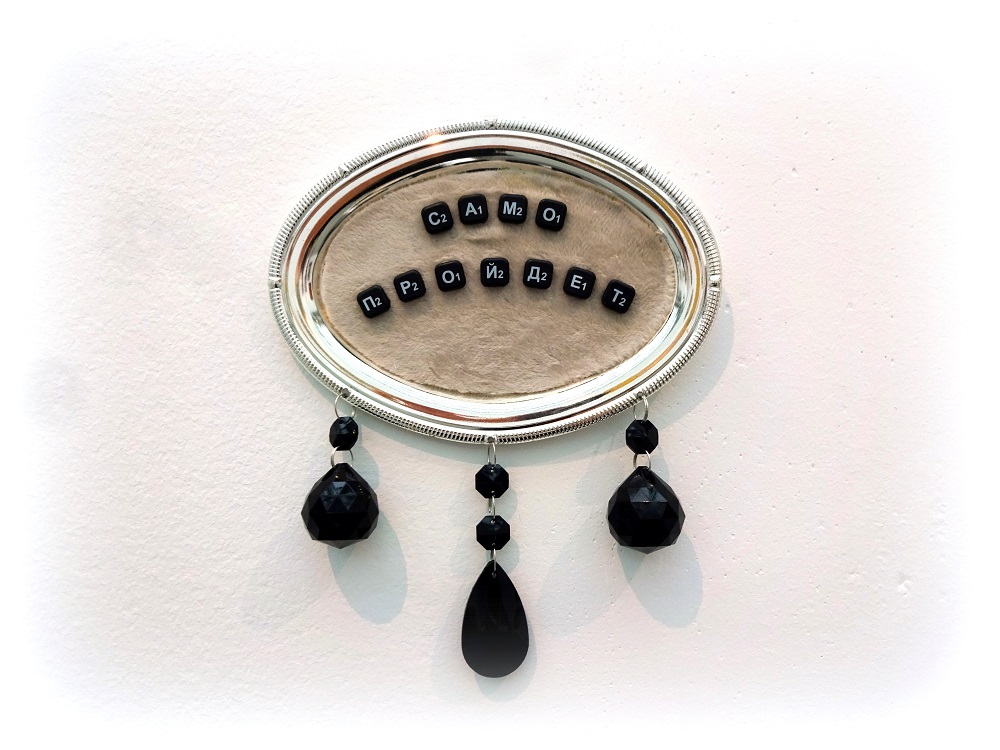
Alina Glazun. The agency Art Ru stand (Moscow)
The Cosmoscow team have serious ambitions. Judging by the title, the art fair aims at conquering an infinite cosmic orbit, choosing to take the Russian capital first. And it seems that it is on the right path: despite tickets sold at 25 thousand roubles, the Cosmoscow VIP Preview and Vernissage were visited by four thousand visitors this year (to last year’s three thousand). In his emotional speech at the opening of the art fair, Simon Rees referred to Moscow as ‘the new London’. From his lips to God’s ears.
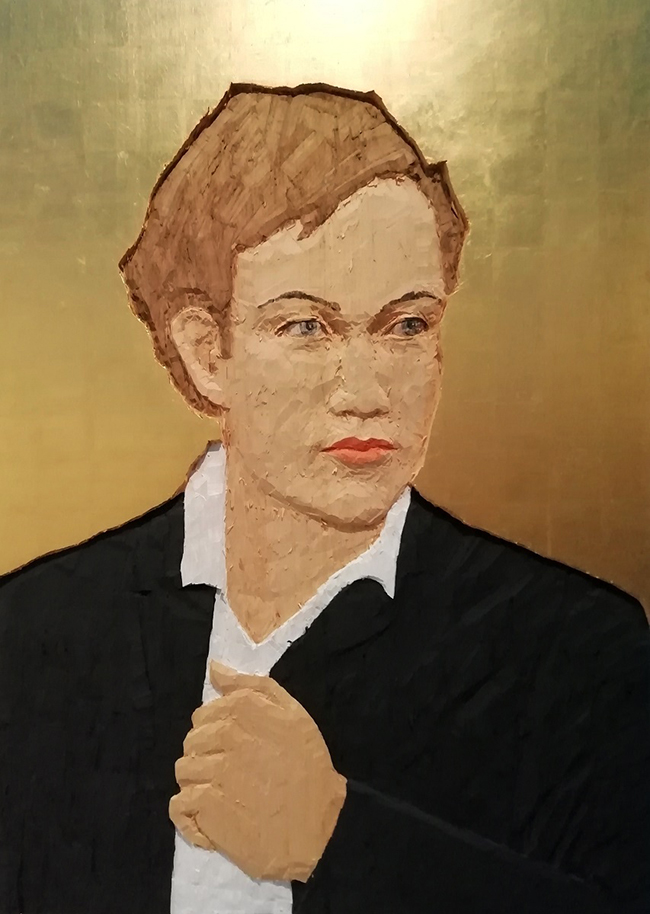
Stephen Balkenhol. A man in a black coat on a gold background. 2016. Galerie Forsblom (Helsinki – Stockholm)